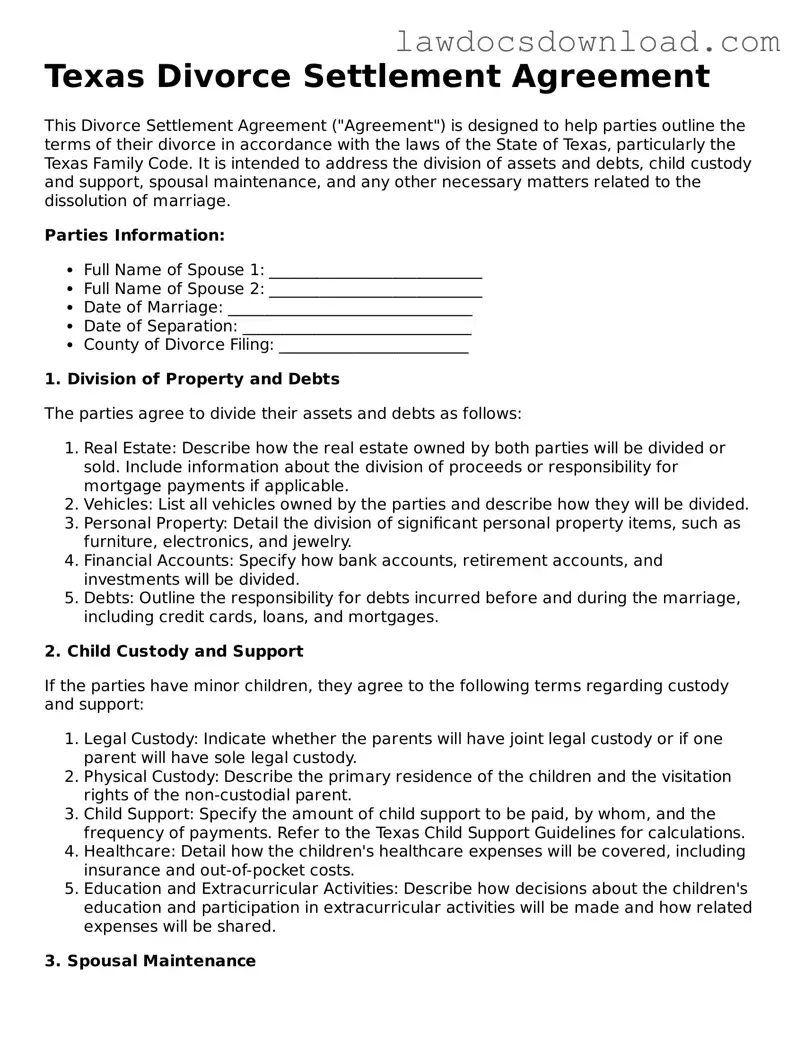Texas Divorce Settlement Agreement
This Divorce Settlement Agreement ("Agreement") is designed to help parties outline the terms of their divorce in accordance with the laws of the State of Texas, particularly the Texas Family Code. It is intended to address the division of assets and debts, child custody and support, spousal maintenance, and any other necessary matters related to the dissolution of marriage.
Parties Information:
- Full Name of Spouse 1: ___________________________
- Full Name of Spouse 2: ___________________________
- Date of Marriage: _______________________________
- Date of Separation: _____________________________
- County of Divorce Filing: ________________________
1. Division of Property and Debts
The parties agree to divide their assets and debts as follows:
- Real Estate: Describe how the real estate owned by both parties will be divided or sold. Include information about the division of proceeds or responsibility for mortgage payments if applicable.
- Vehicles: List all vehicles owned by the parties and describe how they will be divided.
- Personal Property: Detail the division of significant personal property items, such as furniture, electronics, and jewelry.
- Financial Accounts: Specify how bank accounts, retirement accounts, and investments will be divided.
- Debts: Outline the responsibility for debts incurred before and during the marriage, including credit cards, loans, and mortgages.
2. Child Custody and Support
If the parties have minor children, they agree to the following terms regarding custody and support:
- Legal Custody: Indicate whether the parents will have joint legal custody or if one parent will have sole legal custody.
- Physical Custody: Describe the primary residence of the children and the visitation rights of the non-custodial parent.
- Child Support: Specify the amount of child support to be paid, by whom, and the frequency of payments. Refer to the Texas Child Support Guidelines for calculations.
- Healthcare: Detail how the children's healthcare expenses will be covered, including insurance and out-of-pocket costs.
- Education and Extracurricular Activities: Describe how decisions about the children's education and participation in extracurricular activities will be made and how related expenses will be shared.
3. Spousal Maintenance
Describe the terms of spousal maintenance, if any, including the amount, duration, and method of payment. Consider factors listed in the Texas Family Code when determining spousal maintenance.
4. Other Provisions
Include any other agreements made between the parties, such as tax considerations, life insurance policies, and name changes.
Both parties agree to the terms outlined in this Agreement and commit to executing them in good faith. This Agreement serves as a complete understanding between the parties and supersedes any prior discussions or agreements.
Date: _________________
Signature of Spouse 1: ___________________________
Signature of Spouse 2: ___________________________
